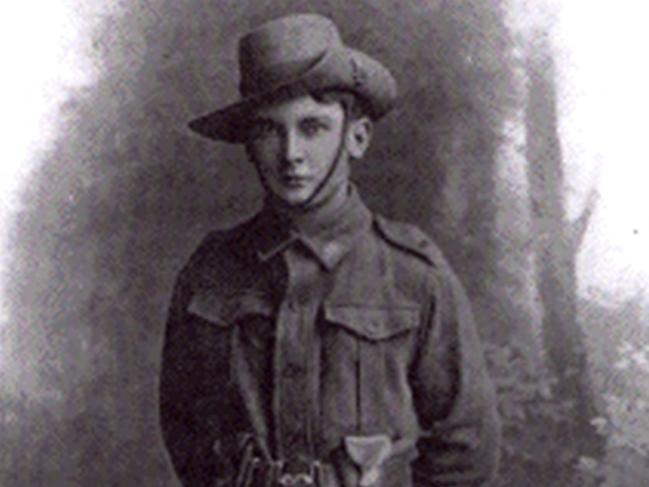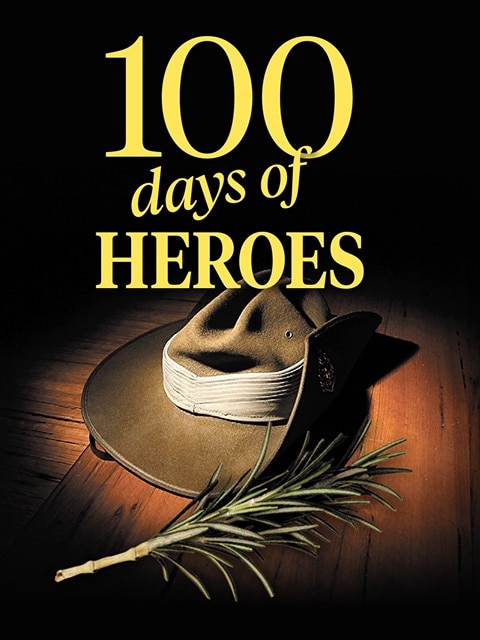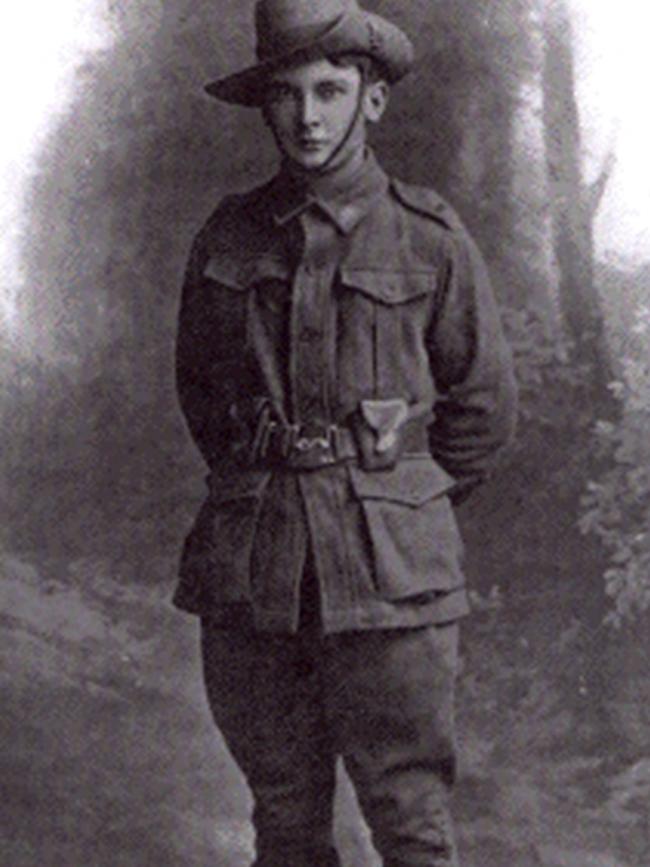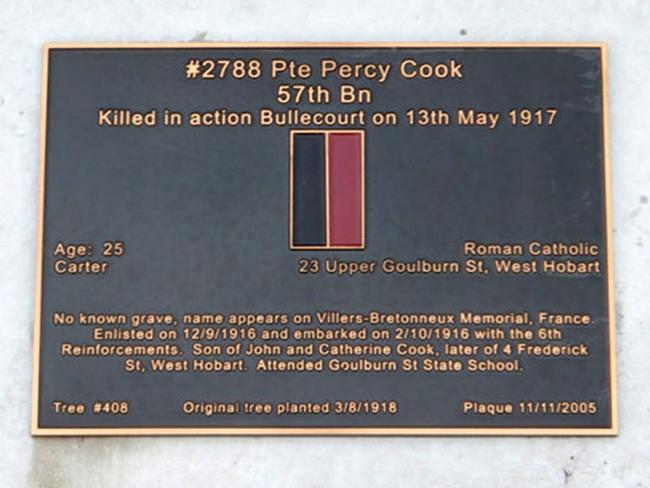Troubled start for young Hobart soldier Percy Cook in his World War I service
GOULBURN Street State School old boy Percy Cook did not cover himself in glory after his initial enlistment with the Australian Imperial Force in September 1914.

Tasmania
Don't miss out on the headlines from Tasmania. Followed categories will be added to My News.
GOULBURN Street State School old boy Percy Cook did not cover himself in glory after his initial enlistment with the Australian Imperial Force in September 1914.
Percy was a 22-year-old carter when he joined up at the Brighton camp, naming his widowed mother, Catherine Cook, of 23 Upper Goulburn St, as his next of kin.
He was appointed a driver with the Australian Army Service Corps and sailed from Melbourn aboard the Armadale on October 20, 1914.
His trouble started not long after arriving in Egypt for training. He was absent without leave for several periods; he was drunken and disorderly; he was absent from a defaulters parade; he used insubordinate language to a superior officer; he disobeyed orders; he spent a period of time in hospital with venereal disease; he was charged with drunkenness on many occasions; and he struck a superior officer.
The latter misdemeanours earned him a court martial and a one-way trip back to Australia for disciplinary reasons in March 1916.

Percy re-enlisted in Victoria in September 1916 and from that point his records show no further misdemeanours.
He joined the 57th Infantry Battalion’s 6th Reinforcement which embarked from Melbourne in October 1916, bound for England.
He went to France at the end of December 30, 1916 and was killed in action on May 13, 1917 at Bullecourt. His fate was revealed in official statements made about his death.
Private G.S. Wilson said: “I was in the next bay to him when he was killed at Bullecourt on May 13th … We were holding the front line under heavy shell fire. In the early morning a shell lobbed right in the bay and killed Cook instantly. Half his head was blown away. When we were relieved he was left in a shell hole with a L/Cpl who was killed with him.”

Private W. Fagg said he was a close friend of Percy Cook. “About 6 o’clock … a shell came over, and dropped in the trench among about six of us. Paddy Cook, being one of them, killing him outright also L/Cpl Jones and wounding eight others besides myself,” he said.
“It all happened in the course of a second and as soon as the smoke of the shell had cleared away I looked around and saw Cook laying alongside of me dead and the others around me groaning.
“I had a rough look over to see where the wound was that killed him but couldn’t find any and I think myself, that it was more concussion than anything else that killed him as he was about the closest to the shell when it exploded about two yards away.
“As soon as I had done all I could to the other wounded I had to go and get my own wound dressed as it was starting to give me pain and making me feel faint and while I was getting dressed a couple of men were sent to the others to attend to them and I heard later that Cook and Jones were buried in the trench close to the spot where they were killed as there was no cemetery within two to three miles from the spot and it was impossible to take them back there, but there is no doubt that where they were buried, they were layed out as comfortable as possible.”
Private Percy Cook is has no known grave but his name appears on the Villers-Bretonneux Memorial in France.
He is also remembered at tree 408 on the Soldiers’ Memorial Avenue, as well as on the St John the Baptist Anglican Church honour board.



